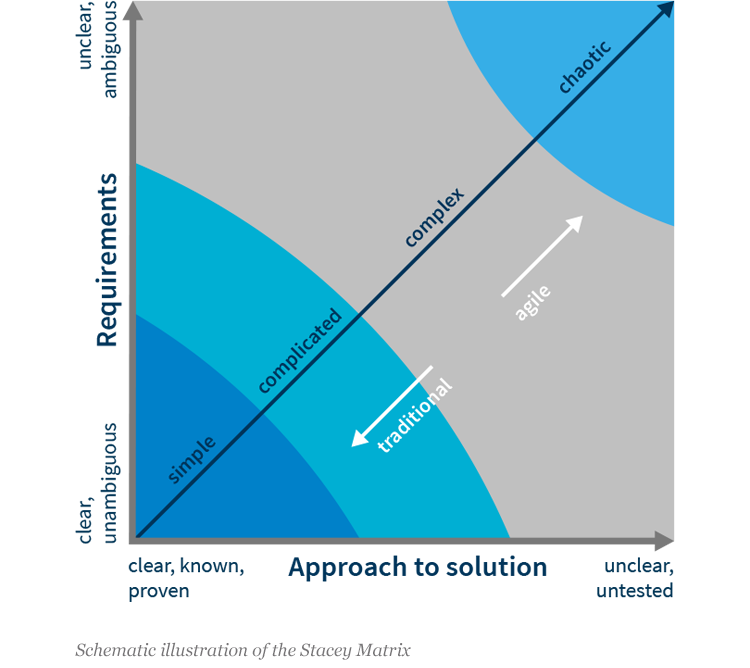Enterprise software development is largely distributed. Solutions are built on a platform, but developed separately from it; the assembly of modules and their adaptation to customer requirements takes place downstream, in other locations. This means different teams, different departments, different companies are building something that is first a product for the customer.
Users expect software that is homogeneous , that reuses operating patterns, and that provides a consistent user experience. This is a major challenge when different departments, some of them distributed around the world, are involved and everyone participating in product development brings their own perspective to the table. As described in my previous article, a basic awareness of the topic of UX throughout the company is already a good prerequisite. How can we build on this and provide even more targeted support in terms of end-to-end UX?
UX influencing is key
Craig Villamor’s presentation “Resilient Enterprise Design” had a profound impact on my view of this challenge. Craig is a Design Director at Google and was previously responsible for the design of Salesforces software. In his presentation at the 2017 Enterprise UX Conference, he uses the four pillars of Design Principles, Platform Mindset, Design Systems, and Influencing in Product Development to show how successful UX design of resilient enterprise applications can succeed.
I would like to focus here on the last pillar, influencing. What is meant here is influencing all the players involved in product creation – at CONTACT, we call them “creators”. This support is also a central aspect of the UX strategy at CONTACT. But what does this look like in concrete terms?
Making it easy to do the right thing
It is not always a good idea to keep the design framework as large as possible: Too many design options can lead to uncontrolled growth and unnecessary inconsistencies. For example, fixed layouts for pages or control elements specify recognizable operating patterns. The manageable design options should then be explained as contextually as possible, in structures with which creators work directly – for example, right in the configuration interface. Such aids can be speaking titles and short descriptions for given layout areas, for example semantic sections in a context menu. In this way, creators can make the right decisions directly without having to go through the design documentation.
Support with the right resources
Good design documentation is also relevant: Design guidelines are the framework for design decisions in application development and configuration. It is important that they are not textbook-raised, but close to the creators’ problems. At best, the documentation for each UI component includes guidance on which use cases it is appropriate for – and which it is not. Examples show how the UI component is used correctly, for example in interaction with other UI elements.
Leading by example
Creators love examples in general: What can you do with this kit? What do possible solutions look like? CONTACT’s products offer an ever-growing number of specialized applications (Task Manager, Xbom Manager, Scheduler, Variant Management, etc.) that build on the InSync Design System and provide Creators with templates or inspiration for new solutions.
So if we provide distributed product stakeholders with guidance for design decisions, support with good application design resources and create lighthouse solutions for orientation, they can more easily create compelling products with a consistent user experience.




